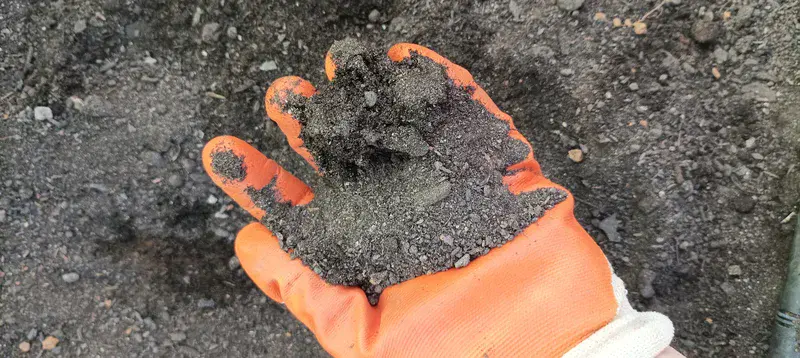
Don't forget your manure
by Antonio Jordán, University of Seville, Sevilla, Spain
First, in English:
Seville City Council grants land to citizens to use as urban farms. Users come together in associations to share community services and work on the farm to obtain vegetables and other products that they grow. In the photo, llama manure being applied to the soil as fertilizer.
Manure is a type of natural fertilizer used to help crops grow. It is made from the droppings of animals such as sheep, cows, horses, chickens, pigs, and bats. Sometimes it also includes things like urine or organic materials like straw.
Pig and cow manure that comes from farms has a liquid consistency and is called slurry. Although people stopped using manure when they started using artificial fertilizers, it is now being used again in organic farming because it helps crops grow and also encourages the growth of microbial fauna, which makes the soil more fertile. Manure can also be used to make compost.
Llama manure is very good for plants because it has a lot of nutrients like nitrogen, phosphorous, and potassium. Professional gardeners and those with home gardens use it a lot.
Ahora, en español:
El Ayuntamiento de Sevilla cede suelo a los ciudadanos para su uso como huertos urbanos. Los usuarios se reúnen en asociaciones para compartir servicios comunitarios y cultivan hortalizas y otros productos. En la foto se muestra estiércol de llama, aplicado al suelo como fertilizante.
El estiércol es un tipo de fertilizante natural que se utiliza para ayudar al crecimiento de los cultivos. Está formado por excrementos de animales como ovejas, vacas, caballos, aves de corral o cerdos. A veces también incluye cosas como orina o materiales orgánicos como la paja.
El estiércol de cerdo y vaca que proviene de las granjas tiene una consistencia líquida y se denomina purín. Aunque la gente dejó de utilizar estiércol cuando empezó a utilizar fertilizantes sintéticos, su uso ha resurgido en la agricultura ecológica, porque ayuda al crecimiento de los cultivos y favorece el crecimiento de la fauna microbiana, lo que hace que el suelo sea más fértil. El estiércol también se puede utilizar para hacer compost.
El estiércol de llama es de gran calidad porque tiene grandes cantidades de nutrientes como nitrógeno, fósforo y potasio. Los jardineros profesionales y los usuarios de huertos urbanos lo utilizan con frecuencia.
Categories
Location
- Europe (3893)
- Southern Europe (1691)
- Spain (819)
- Exact location (-5.9210 W, 37.4155 N)
Tags
Colours
Image properties
4000 × 1792 px;
image/jpeg; 1.6 MB
Camera:
Xiaomi M2103K19G
Taken on 1
May
2023
Submitted on 9 May 2023
Licence
Creative Commons Attribution-ShareAlike 3.0 Unported (CC BY-SA 3.0)
Credit
Antonio Jordán (distributed via imaggeo.egu.eu)
Share
Appreciate
Report